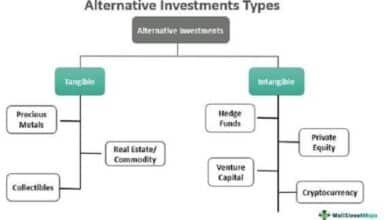Currency Exchange Rates: A Comprehensive Guide

Introduction
Currency exchange rates are a crucial aspect of international finance and global trade. Understanding what a currency exchange rate is can help individuals and businesses navigate the complexities of the financial world. A currency exchange rate represents the value of one currency in relation to another. For example, if the exchange rate between the US dollar (USD) and the Euro (EUR) is 1.2, it means that 1 USD can be exchanged for 1.2 EUR. This rate fluctuates based on various economic factors, making it essential to grasp its dynamics.
How Currency Exchange Rates are Determined
Currency exchange rates are determined by the foreign exchange market, where currencies are traded. This market operates 24/7 and is influenced by supply and demand dynamics. Central banks, financial institutions, corporations, and individual traders participate in this market. A currency exchange rate can be influenced by interest rates, inflation, political stability, and economic performance. These factors collectively determine the value of a currency compared to another, impacting international trade and investment.
Types of Currency Exchange Rate Regimes
There are several types of currency exchange rate regimes, each with distinct characteristics. The most common ones include fixed exchange rates, floating exchange rates, and pegged exchange rates. Fixed exchange rates are set by a country’s government and do not fluctuate with market conditions. Floating exchange rates are determined by market forces without government intervention. Pegged exchange rates are fixed to a major currency, like the US dollar, but can adjust periodically. Understanding these regimes helps in comprehending how a currency exchange rate operates in different economic environments.
Factors Influencing Currency Exchange Rates
Several factors influence currency exchange rates. Interest rates play a significant role; higher interest rates attract foreign investors, increasing demand for the currency. Inflation rates also impact exchange rates; lower inflation typically leads to a stronger currency. Political stability and economic performance are crucial as well. A stable political environment and robust economic growth make a country more attractive to investors, strengthening its currency. Understanding these factors is essential for predicting changes in currency exchange rates.
The Impact of Currency Exchange Rates on the Economy
Currency exchange rates have a profound impact on the economy. A strong currency can make imports cheaper and exports more expensive, affecting a country’s trade balance. Conversely, a weak currency can boost exports by making them more competitive but can increase the cost of imports, leading to inflation. For businesses, currency exchange rates influence pricing, profitability, and market strategy. For consumers, they affect the cost of foreign goods and travel expenses. Understanding how currency exchange rates impact the economy is crucial for making informed financial decisions.
How to Convert Currency Using Exchange Rates
Converting currency using exchange rates is a common practice for travelers and businesses engaged in international trade. To convert currency, you need to know the current exchange rate between the two currencies. For example, if you want to convert 100 USD to EUR and the exchange rate is 1.2, you would receive 120 EUR. Online currency converters and financial institutions provide up-to-date exchange rates and conversion tools. Understanding how to use these tools effectively ensures you get the best value for your money when converting currencies.
The Role of Central Banks in Currency Exchange Rates
Central banks play a pivotal role in managing currency exchange rates. They use various monetary policy tools to influence their currency’s value, such as adjusting interest rates, conducting open market operations, and intervening in the foreign exchange market. For instance, a central bank might increase interest rates to attract foreign capital, strengthening the currency. Conversely, it might lower rates to stimulate economic growth, potentially weakening the currency. Understanding the role of central banks helps in comprehending how a currency exchange rate can be managed and stabilized.
Currency Exchange Rates and International Trade
Currency exchange rates are integral to international trade. They determine the cost of importing and exporting goods and services. A favorable exchange rate can make a country’s exports cheaper and more competitive in the global market. Conversely, an unfavorable exchange rate can increase the cost of imports, affecting domestic prices and inflation. Businesses involved in international trade must monitor currency exchange rates closely to manage risks and optimize their pricing strategies. Understanding the relationship between currency exchange rates and international trade is crucial for global economic interactions.
Practical Tips for Managing Currency Exchange Risks
Managing currency exchange risks is essential for businesses and individuals engaged in international transactions. One effective strategy is to use hedging instruments such as forward contracts and options, which lock in exchange rates for future transactions. Diversifying currency exposure by dealing in multiple currencies can also mitigate risks. Regularly monitoring economic indicators and political developments helps anticipate exchange rate movements. Understanding these practical tips ensures better management of currency exchange risks, protecting against adverse financial impacts.
Future Trends in Currency Exchange Rates
The future of currency exchange rates is influenced by emerging economic trends and technological advancements. Digital currencies and blockchain technology are reshaping the landscape, offering new ways to exchange value across borders. Global economic shifts, such as changing trade policies and geopolitical developments, will continue to impact exchange rates. Understanding these future trends helps individuals and businesses prepare for potential changes in the currency exchange environment. Staying informed about these trends is crucial for adapting to the evolving financial landscape.
Conclusion
Understanding what a currency exchange rate is and how it functions is essential for navigating the complexities of the global economy. Currency exchange rates affect international trade, economic performance, and personal finances. By grasping the factors that influence these rates and the role of central banks, individuals and businesses can make informed decisions. Practical tips for managing currency exchange risks and insights into future trends further enhance financial literacy. Staying informed and proactive ensures better financial outcomes in an interconnected world.
FAQs
- What is a currency exchange rate? A currency exchange rate is the value of one currency in relation to another, determined by the foreign exchange market based on supply and demand dynamics.
- How are currency exchange rates determined? Currency exchange rates are determined by factors such as interest rates, inflation, political stability, and economic performance, influenced by the foreign exchange market.
- What are the types of currency exchange rate regimes? The main types of currency exchange rate regimes are fixed exchange rates, floating exchange rates, and pegged exchange rates, each with unique characteristics.
- How do currency exchange rates impact the economy? Currency exchange rates impact the economy by affecting the cost of imports and exports, influencing inflation, and shaping business pricing and profitability.
- What role do central banks play in currency exchange rates? Central banks manage currency exchange rates through monetary policy tools such as interest rate adjustments and foreign exchange market interventions.





